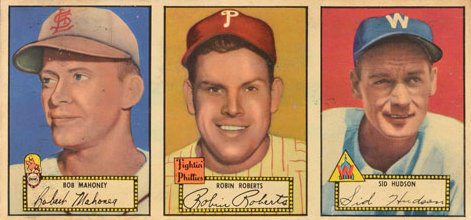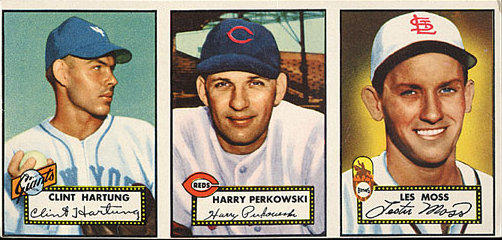Well it's definitely spring auction season around the hobby and all sorts of amazing things are being offered, often from long term collections or holdings that are being broken up. One of the more interesting aggregations of items I've seen so far concerns Topps shipping cases, which hail from the Larry Fritsch warehouse and were recently gaveled at Collect Auctions. Fritsch still sells cards to the public but have been using Collect to auction various vintage items from their immense inventory. Generally, I prefer not to pick images from a single source for my posts but this was such a concentration of cases, I couldn't resist. Let's look at some Baseball offerings.
Here's a 1970 Baseball vending case:
The move of production from Brooklyn to Duryea, Pennsylvania in 1966 led to an the accompanying change of manufacturing information on their confectionery packs around mid-1969. However, items like vending boxes that had no gum often showed their origin as the latter.
Now, the fun part as the packing code reads: 311601. Deciphering that using the "Cummins method" we get July 16, 1970. While it's certainly not clear exactly which series was packed using this code, a reasonable guess, with seven distinct series in 1970, would run from the 5th to the 7th series. However, it appears the good workers in the Fritsch warehouse have solved this riddle for us:
That "T70-7" suffix, may not be 100% definitive given the vagaries of storage in such a joint but I spent two years working in a shipping warehouse during college and once you opened a case to pull product, the remaining items never went anywhere else. So I make this to be a high number shipping carton with about a 95% level of certainty.
If this is indeed a high number case, then Topps Baseball packing dates for series 1 likely start in January. That makes sense, with a new series coming out roughly every month and I can attest Football cards were showing up in the stores by me as a kid by the middle of August and they were always started after Baseball concluded.. The initial release date for sports products seems to have crept earlier and earlier as the years passed - 1952 Topps Baseball didn't roll of the presses until the latter part of February. IIRC by the early 1980's, December "prior" saw the first Baseball cards of the new season.
Next, we do get a little mystery. This is described as a 1970 Super Baseball case. It's a cool one, dig the Pete Rose graphic:
OK, first things first. It's an X-out case, meaning it was non-returnable. Topps would also mark the boxes with big, black magic marker X's but this is the first one I've seen where it's stamped on a shipping carton. The packing code date is January 21, 1971. Wait, what?! Well the same wrapper and I believe the same box (or the majority of the graphics at least) were used for both the 1970 and 1971 releases of this product. As January seems very early for a supplemental issue, which generally seem to have been tied to the baseball season already being well underway, given the X-out, this seems like 1970 overstock being sent to Fritsch. Also, note the address has switched to Duryea on the shipping carton.
1973 also presents an anomaly:
Well, you can see the problem if you've been parsing the codes along with me. January 17, 1974 seems to be the packing date but if you look just above it, part of another code can be seen. I think that's the original packing date, which comes across July 11 (and I assume 1973). Maybe this case was never shipped originally, or used for a repack with markered X-out boxes. There's some extra bits below the 1974 stamps as well, possibly marking this as non-returnable as no X code is seen.
Here's a final Baseball case, from 1975:
At last, a code that makes sense: February 13, 1975. Huzzah!
























.jpg)
.jpg)
.jpg)
.jpg)
.jpg)







